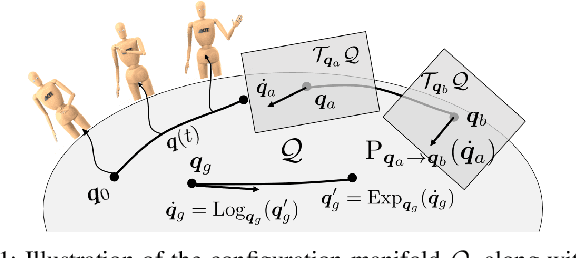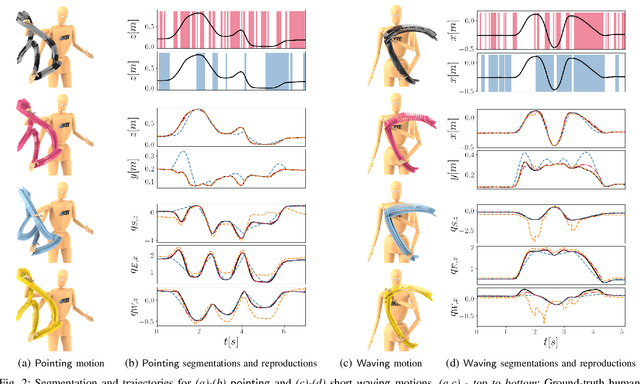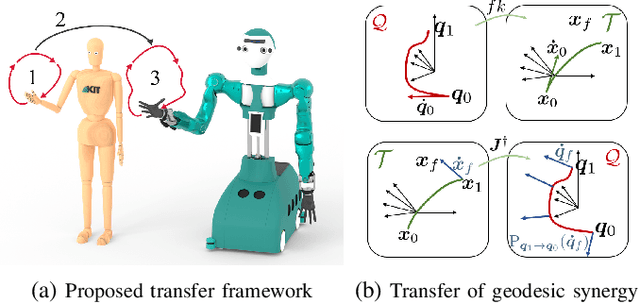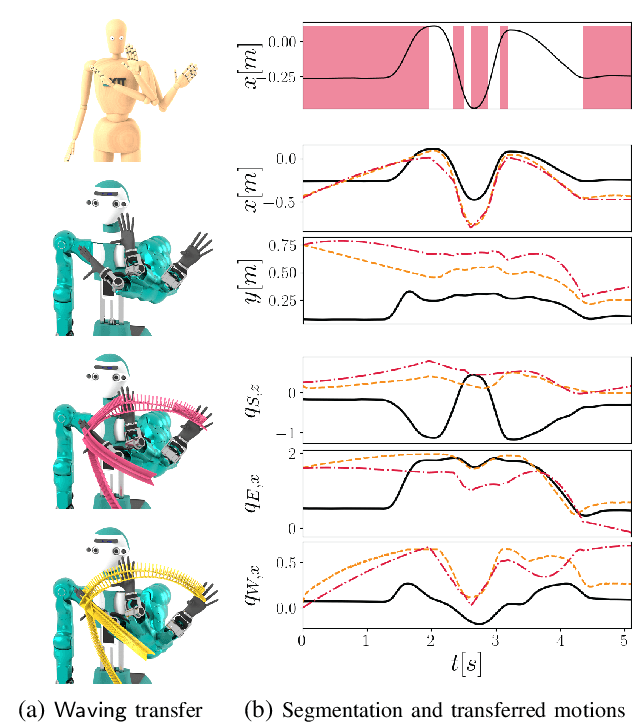Holger Klein
On the Design of Region-Avoiding Metrics for Collision-Safe Motion Generation on Riemannian Manifolds
Jul 28, 2023Abstract:The generation of energy-efficient and dynamic-aware robot motions that satisfy constraints such as joint limits, self-collisions, and collisions with the environment remains a challenge. In this context, Riemannian geometry offers promising solutions by identifying robot motions with geodesics on the so-called configuration space manifold. While this manifold naturally considers the intrinsic robot dynamics, constraints such as joint limits, self-collisions, and collisions with the environment remain overlooked. In this paper, we propose a modification of the Riemannian metric of the configuration space manifold allowing for the generation of robot motions as geodesics that efficiently avoid given regions. We introduce a class of Riemannian metrics based on barrier functions that guarantee strict region avoidance by systematically generating accelerations away from no-go regions in joint and task space. We evaluate the proposed Riemannian metric to generate energy-efficient, dynamic-aware, and collision-free motions of a humanoid robot as geodesics and sequences thereof.
A Riemannian Take on Human Motion Analysis and Retargeting
Aug 02, 2022



Abstract:Dynamic motions of humans and robots are widely driven by posture-dependent nonlinear interactions between their degrees of freedom. However, these dynamical effects remain mostly overlooked when studying the mechanisms of human movement generation. Inspired by recent works, we hypothesize that human motions are planned as sequences of geodesic synergies, and thus correspond to coordinated joint movements achieved with piecewise minimum energy. The underlying computational model is built on Riemannian geometry to account for the inertial characteristics of the body. Through the analysis of various human arm motions, we find that our model segments motions into geodesic synergies, and successfully predicts observed arm postures, hand trajectories, as well as their respective velocity profiles. Moreover, we show that our analysis can further be exploited to transfer arm motions to robots by reproducing individual human synergies as geodesic paths in the robot configuration space.
 Add to Chrome
Add to Chrome Add to Firefox
Add to Firefox Add to Edge
Add to Edge